|
Lab Microbial Systems Ecology
|
||
|
Research Interests and Visions: We are inspired by the miracles of microbial life and its impact on the biosphere since its early history. Our goal is to expand our understanding of the ecology of microbes, their contribution to the evolution of life and biodiversity and their role in our environment, and where appropriate in outer space. We seek to explore the microbial ecology in an interdisciplinary way, with the aid of a variety of methods (e.g. enrichments, microscopy, taxonomy, phylogeny and molecular tools), and collaboration with other disciplines, such as environmental sciences, chemistry, geology, astrobiology and applied sciences in biotechnologial and medical fields. The goal is to gain an holistic understanding of the delicate and complex life systems and interactions on Earth, towards a healthy and sustainable existence. |
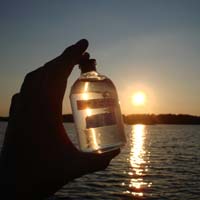 |
Research Projects:
|
Environmental microbiology/biotechnology: |
|
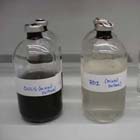 |
Biology of Water Purification:
The principle of the biological purification in environmental biotechnology is the same as the spontaneous purification in natural waters. The major drawback of biological processes is that they are vulnerable. However, research on the microbiology is expected to yield a better understanding and control of the microbiological processes. We explore different types of water systems: i) Pristine and contaminated groundwater; ii) Biological wastewater treatment (nitrogen and phosphorus removal, filamentous bacteria, grazing microfauna); iii) The present and ancient (the Littorina Sea) waters of the Baltic Sea. |
|
|
|
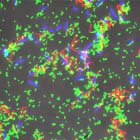 |
Chlorinated Contaminants: Chloro-organic compounds such as chloroethenes (PCE, TCE and VC) are widespread and serious pollutants in the environment. Fortunately, bacteria (reductively dechlorinating bacteria like Dehalococcoides) exist in nature which can degrade these compounds into harmless substances. However, unoptimal conditions can lead to even more toxic products. The goal of our project is to optimize different molecular in situ detection techniques for improved screening and evaluation of dechlorinating species and their relevant associates (e.g. methanogens, spirochaetes). For more info click here. |
|
|
|
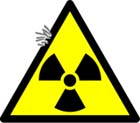 |
Heavy Metals and Radionuclides: Heavy metal/radionuclide reducing species such as Anaeromyxobacter and Geobacter present a great potential for different environmental biotechnological applications, from environmental restoration by bioremediation of contaminated substances, to harvesting electricity from waste organic matter.The goal of our project is to optimize different molecular in situ detection techniques for improved screening and evaluation of heavy metal and radionuclide transforming species. For more info click here. |
|
Microbial Ecology: |
|
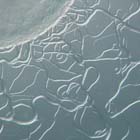 |
Biodiversity and Screening of Novel Species:
We explore the biodiversity of: i) The deep branching Chloroflexi, ii) Degradative species relevant for environmental microbiology/biotechnology, see above; iii) Novel Archaea and Bacteria (e.g. nitrifyers) in dark life ecosystems, iv) Mycobacteria of environmental and clinical relevance, v) Novel, filamentous Cyanobacteria, vi) Mineral precipitating bacteria for sustainable stabilisation, "bio-cementation". |
|
|
|
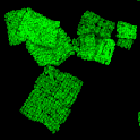 |
Microbial Interactions and Multicellular Prokaryotes:
Most other life forms depend on prokaryotes in some way. An increased unterstanding of prokaryotic interactions (e.g. symbiosis) will expand our views on life and its evolution on our planet, and how this knowledge can be used in an holistic and sustainable way. We explore interactions between: i) different microbial species (e.g. in bioremediation of chlorinated solvents and heavy metals/radionuclides, see section above); ii) between different organisms (e.g. prokaryotes and eukaryotes (see below); iii) within single species that are capable of forming multicellular structures like filaments or odd shapes like squares (e.g. Lampropedia). |
|
|
|
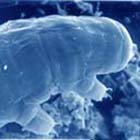 |
Eukaryote Microbiology:
Microscopic, eukaryotic organisms with animal-like qualities such as protists and nematodes are present in every habitat on Earth. Although they fill essential roles in the environment, they also, similar to the prokaryotes, belong to the least understood life forms on Earth. We explore: i) the impact of grazing microfauna on environmental processes; ii) Tardigrada which are microscopic bear-alike organisms, impressive cosmopolitans and polyextremophiles, iii) Fungi of environmental relevance; iv) Lichens (model organisms for extreme survival mechanisms). |
|
Astro & Geobiology: |
|
 |
Geobiology of Dark Life Ecosystems - Cave and Mine Settings:
Caves offer fascinating, undisturbed portals to dark, oligotrophic, isolated ecosystems. They can therefore serve as interesting model systems to address evolutionary hypotheses on the boundaries of “dark life” in rocky/mineral based environments. For this, we explore a variety of caves and mines (e.g. the sandstone caves of the Tepui caves in the Guyana Highland and the sulfidic Lower Kane Cave WY USA). |
|
|
|
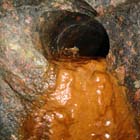 |
Geobiology of Dark Life Ecosystems - Anthropogenic Subsurface Settings:
The Äspö Hard Rock Laboratory (HRL) is a unique research facility in Sweden for geological disposal (e.g. spent nuclear fuel). Here, experiments can be performed at a depth of 500 metres, on many different types of microorganisms encountered in the subsurface (see e.g. MICANS). Our contribution is to explore: i) the microflora of the groundwater sources and their impact on the biofilms growing in the tunnel; ii) microorganisms involved in heavy metal transformation; and iii) microorganisms involved in the nitrogen cycle. |
|
|
|
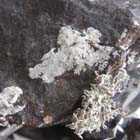 |
Geobiology of Meteorites and Rocks:
Meteorites have fascinated mankind since the beginning of its history. In modern astrobiology, they may serve as fascinating material for exploring elemental and mineralogical composition of the least altered and oldest leftovers of the early solar system, clues for origin of life, and biological colonization and weathering processes on minerals. Our goal is to search for life signatures and colonization of life on meteorites on Earth. For more information, click here. |
|
|
|
* * * This site is currently under reconstruction * * *
This website works best with the explorer browser. Last updated on 8 May 2015. Lab Microbial Systems Ecology, Department of Microbiology, TUM, Germany, www.environmental-microbiology.de, contact info: nlee<at>environmental-microbiology.de
